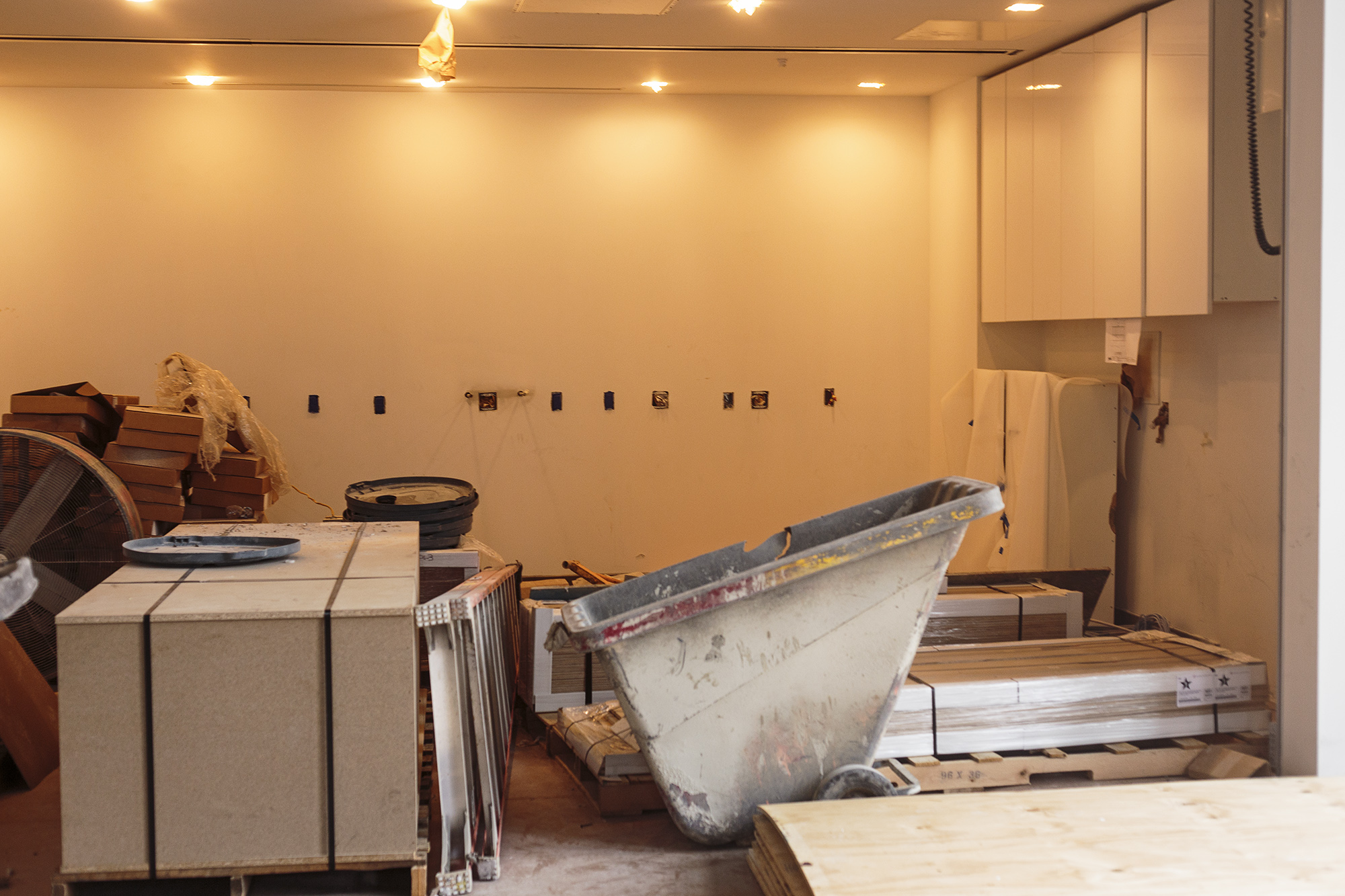The University of Maryland will have four additional cafes by this summer thanks to construction in H.J. Patterson Hall and the new Edward St. John Learning and Teaching Center.
The four cafes will be unique in that they will mix new food and drink offerings with the typical things you can find in other cafes around the campus, Dining Services spokesman Bart Hipple said. One of the cafes will be in H.J. Patterson, with the remaining three cafes opening in the nearly completed Edward St. John center.
H.J. Patterson previously didn’t have a cafe, but this new cafe on the building’s main floor will feature a Ramen noodle bar, where patrons can make a customized bowl of Ramen. The cafe will also have a section offering sandwiches, salads, sushi, snacks and sodas.
“I’m actually most excited about the Ramen noodle bar because it’s different,” Hipple said. “H.J. Patterson is going to have a lot of international classes and offices in it, so I think that might be a really good fit for that area, and I’m excited about having a cafe with a different menu.”
Hipple said Dining Services anticipates being able to open the cafe in H.J. Patterson at some point during the spring semester.
The Edward St. John center’s three cafes will cost about $660,000, said Bill Olen, Facilities Management executive director. The three cafes will be on different floors of the building and will each offer different items, Hipple said. One will be a Starbucks cafe — similar to that of Footnotes in McKeldin Library or The Coffee Bar in Stamp Student Union — serving coffee and pastries. The second one will be an upscale cafe with options such as Boar’s Head sandwiches, salads, sushi and snacks. The final cafe will have a hot entrées and hot dishes line with choices including soup and chili, Hipple said.
The cafes’ grand opening will depend on the completion of the building, which is located on McKeldin Mall and slated to open for summer session I after two and a half years of construction.
“The building is going to open in June, and we will open in June if the section of the building is ready for us,” Hipple said.
Although normally business for cafes might be slower in the summer months, Hipple said he sees this as a dry-run to make sure the cafes can handle the fewer students over the summer before taking on a normal semester. He added that some of the summer classes will be meeting in the new center, which is a good opportunity to get initial reactions from students.
Courtney Bormida, a sophomore early childhood and special education major, said she is excited about the cafes and the added appeal to the new Edward St. John building.
“It’s nice considering that the Benjamin Building, which is like the only other education-type building on campus, doesn’t really have [food options] like that,” she said.
Sophomore Garret Wegner expressed similar sentiments about the new cafe in H.J. Patterson, where he has a class this semester.
“It seems pretty cool if it’s trying to appeal to an audience of international students,” the physiology and neurobiology major said. “I don’t think you can find that in many other places on campus. You don’t have to walk all the way to a diner or Stamp to get food, and if you have a bunch of classes in there, at least you don’t have to leave.”
Despite the enthusiasm for the cafes, none of them have a name yet. Hipple said the naming process isn’t up to Dining Services.
“Typically and historically, we like to have the building — the people who are in the building or the people who will be going to the cafe — figure out the name for the cafe,” he said.
Giving examples of current cafes, Hipple said the journalism department chose the name of Knight Hall’s cafe, Off the Record; the English department came up with Creative Commons for the cafe in Tawes; and the students in the BioResearch Building ultimately named their cafe BRBean.
“I remember BRBean had quite a large contest with prizes and stuff in that building, and people submitted their ideas,” he said. “So different buildings do it in different ways.”
Ultimately, Hipple highlighted the fact that these four cafes are unique to Dining Services and the university as a whole.
“We like all the projects we do,” he said. “These projects are unique and really cool because they are built for [Dining Services]. As opposed to many spaces where they put the building up and then decide to put a cafe in, it’s really nice to have a space where we got to have input into the whole process.”



